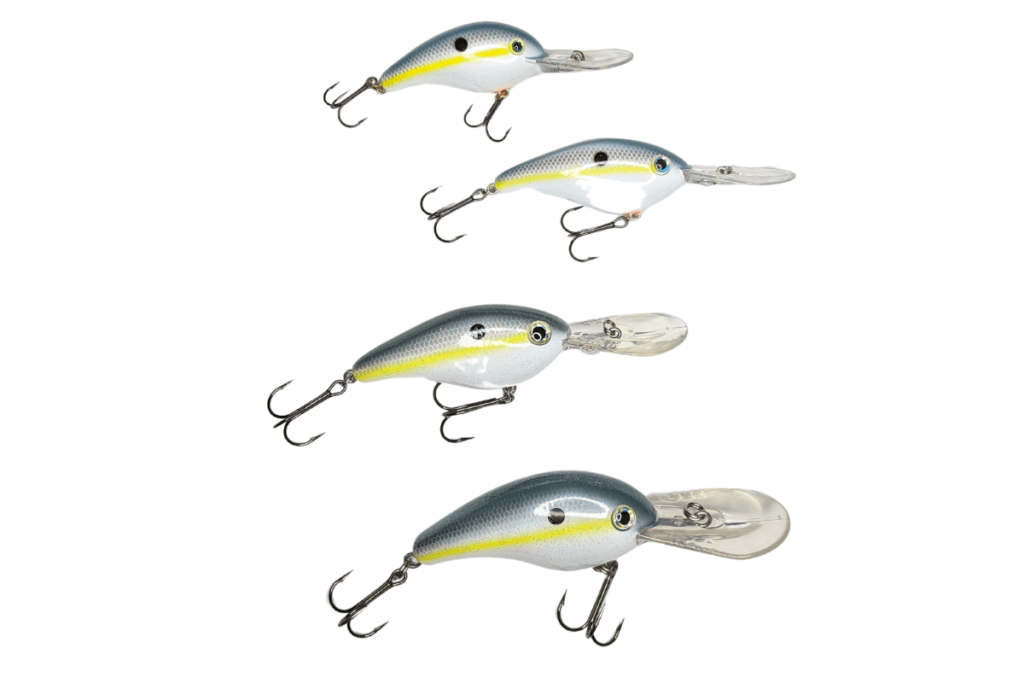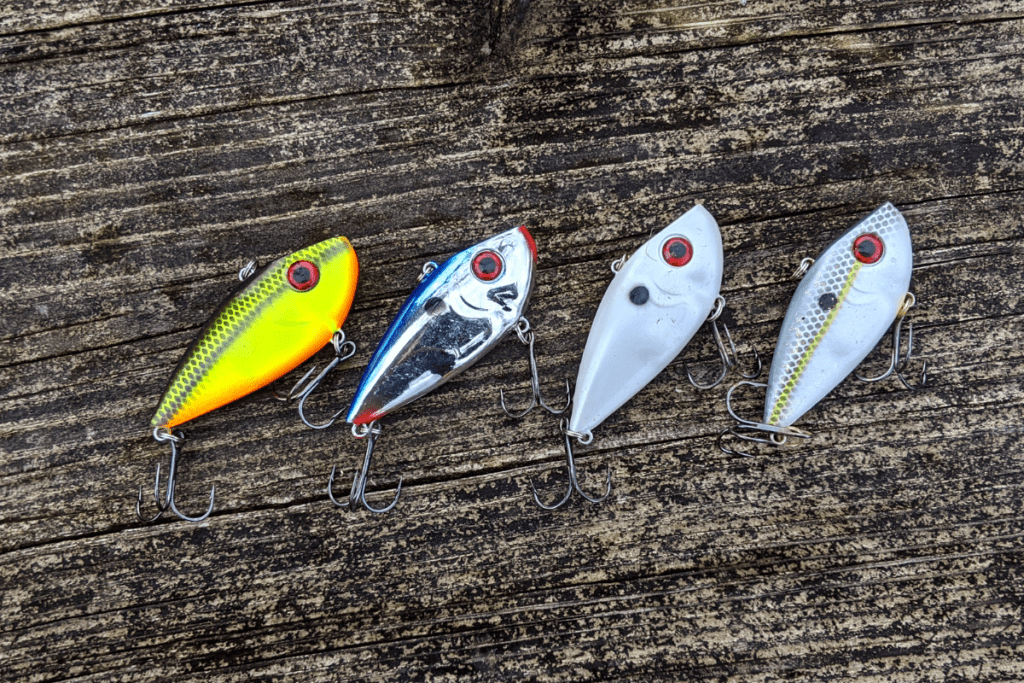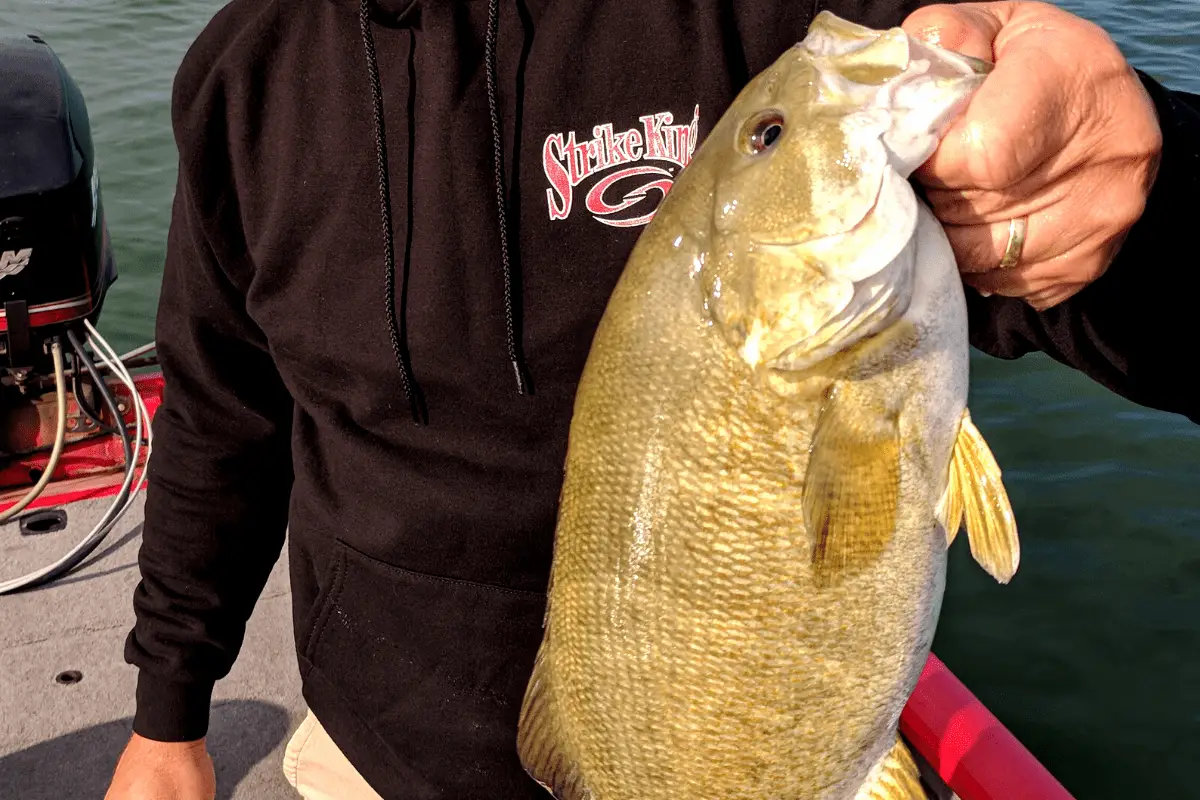Locating prespawn bass can be challenging. Using crankbaits to locate them is an efficient process that can help anglers find where those big schools of fish are hiding.
There are two types of crankbaits that I find are ideal for locating prespawn bass: deep divers and lipless crankbaits. These lures cover water efficiently and find large groups of fish. Start two cast lengths from shore to identify those staging areas where bass hold before moving shallow to spawn.
In this article, I will explain how I use these two types of crankbaits to locate and catch prespawn bass.
Why the Prespawn can be Challenging
I consider it prespawn bass fishing once that ice has come off the water. The lake or river temperatures are considered prespawn all the way up to 60°.
During the winter, bass are often schooled up in huge groups. It is not unusual to find fifty or sixty bass in one small area. These fish will move up to staging locations waiting for the water temperatures to increase to the right levels for a successful spawn.
That means that anglers are searching through a lot of empty water before they locate the school. This process can sometimes take several hours and leads to angler frustration and loading the boat back on the trailer.
Keep a positive outlook. Every cast is one closer to locating that group of fish.
Where to Start Looking for Prespawn Bass
If you are familiar with the lake or river you are fishing, start your search near traditional spawning areas. If you are not sure where these spawning areas are on the water you are going to fish, pull up a Google Earth image.
Find shorelines that are on the north side where they will receive the most direct sunlight. Look for deeper water access nearby and you most likely have a great place to start looking. If possible, choose locations that have a hard bottom.
Fish Migration Routes
Now that you have a spawning location figured out, it is time to think like a bass. How are you going to travel from the winter hangout to the spawning beds? Is there some sort of contour feature that will work well as a migration route?
For example, whitetail deer love to use edges. When they move from one location to another, deer will hang near these differences in types of cover. These could be edges of the woods along a field, it may be a farm lane, a transition between tall timber and buck brush. Locate where two types of cover intersect and deer will use it.
The same mindset applies to bass.
Typical bass migration routes might include the following: a creek channel, a ditch, a boulder sitting on a point, or a weed line.
Two Cast Lengths
I prefer to start my crankbait fishing two cast lengths from the shoreline. The smaller males will be the first ones up to locate bedding sites and fan out the silt.
The larger females will hold off in deeper water and wait to move up. Often times, our boat is sitting above them and we are casting away from the big fish. Maintaining a distance of two cast lengths away will help ensure that you are truly looking for the bigger females staging off the spawning areas.

Deep Diving Crankbaits
Now that you have a starting depth, choose the appropriate deep diver to hit bottom. Staging bass will hang near some sort of unique structure or cover in their path to spawning locations.
I like to use the example of a big boulder sitting on a gravel point. That boulder provides something different, a transition, that groups of fish can hang near until they want to move up shallower.
You want to make sure that your deep diving crankbait is hitting the bottom. First, this will elicit reaction strikes from staging bass. Second, it will tell you what type of staging area they are using.
For example, if I am fishing a bank that has small gravel on it and then I feel some larger chunk rock, I expect to get a bite. That type of transition holds fish and a deep diver telegraphs that information back to you.

Lipless Crankbaits
While a straight chunk-and-wind retrieve will work with these lures, it is best to keep in mind that lipless crankbaits catch a lot of fish on the drop. The more we can make this lure fall, the more likely it is we will get a bite.
The easiest way for me to explain how to fish a lipless crankbait is to think of it like a jig. Let it fall to the bottom, pop it up about two feet and then let it fall again.
If you hang on grass, leaves, or other muck, just rip it free and let that bait drop to the bottom on a slack line.
A lipless crankbait is great at exploring multiple depth zones without the need to change lures. Yes, if you are fishing really deep water you may want to scale up, but a traditional ½ oz lure will work in most situations.
The only downside to a lipless crankbait shows up when fishing around a lot of wood. It doesn’t have the bill a deep diver does and therefore will get hung much easier. If you are around rock or vegetation, this is a dynamite bait to find prespawn bass.
Color Choice
There are some times of the year, where I don’t worry too much about color. The standard choices work fine.
Prespawn fishing is my one exception to this rule. I believe that color choice right now, when the water is still below spawning temperatures, can make the difference between a bass that commits to taking a lure and one that just swats at it, or worse, ignores it completely.
I still start with traditional natural colors, but will soon tweak it if I know I am in a high percentage area but failing to connect. If you have a partner in the boat, this is an excellent time to experiment with color. Each of you use something a little different until you get things dialed in.
Lots of Searching
It is important to remember that you may search through a lot of water before you find that big group of fish. Stay positive. Understand that each cast without a strike is one more towards finding a potential pile of fish that will provide memories for a lifetime.
Once you find them, they will eventually wear out on the crankbait bite. You may need to then switch over to some soft plastics, Carolina Rig, or another presentation to fire that school back up.
Final Thoughts
Prespawn bass fishing is a time of high hopes coupled with frustrating hours of empty water, but that load of big bass is out there.
As anglers, we often overthink the entire process. Remember, these fish have a small brain and rely on instinct to survive. The more that we keep it simple and focus on what we know, the odds of being successful turn to our favor.
Good luck out there. Be safe, and don’t forget to encourage someone today. You never know how you may just change their life forever.

